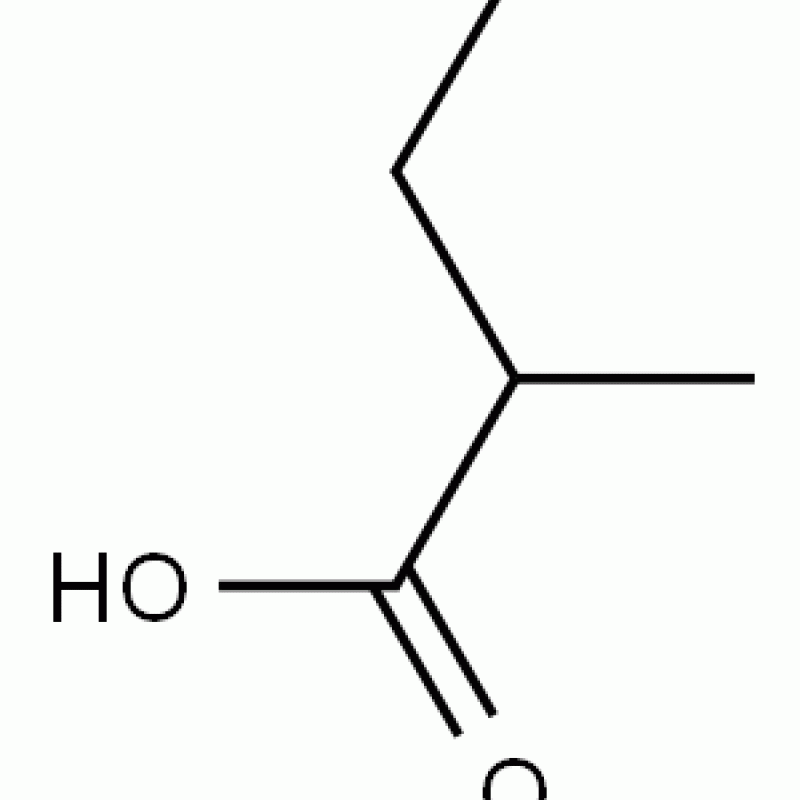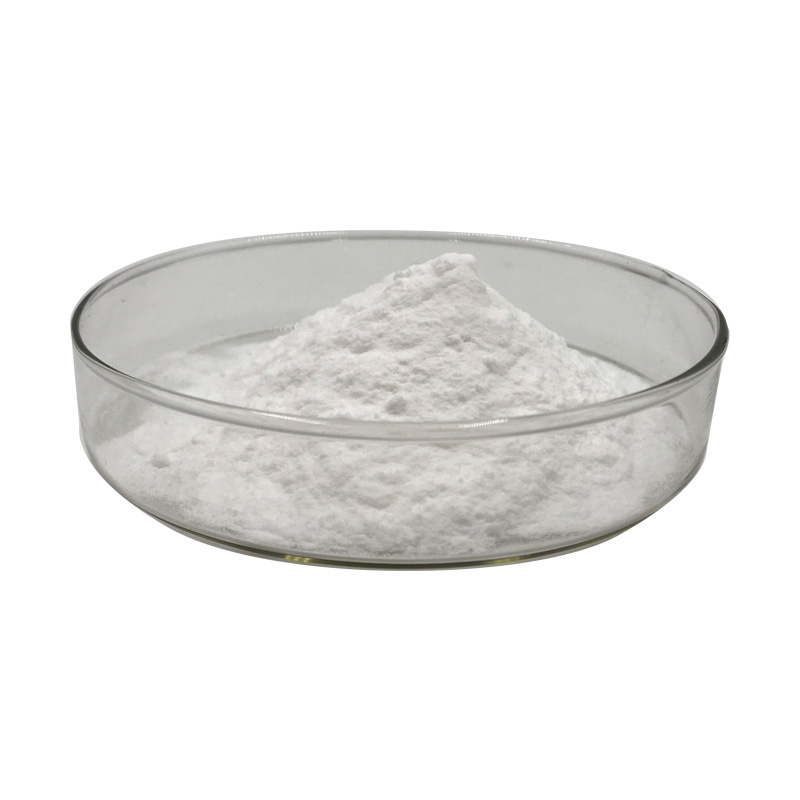Products Description of 6,7-Dimethoxyquinazoline-2,4-dione CAS#28888-44-06,7-Dimethoxy-2,4-quinazolinedione (doxazosin EP impurity D) is a chemical crystalline compound with a melting point of >300°C, an intermediate of prazosin hydrochloride.6,7-Dimethoxyquinazoline-2,4-dione Chemical PropertiesMelting point >300 °C (lit.)Boiling point 363.37°C (rough estimate)density 1.3404 (rough estimate)refractive index 1.6300 (estimate)storage temp. 2-8°Csolubility Aqueous Acid (Sparingly)pka10.27±0.20(Predicted)color White to Off-WhiteWater Solubility i
Contact Now
Products Description of Tetraethylammonium hydroxide CAS#77-98-5Tetraethylammonium hydroxide is an organic quaternary ammonium base. Most products exist in the form of methanol and aqueous solution. It is a colorless to light yellow liquid at room temperature. It has strong alkalinity and can absorb carbon dioxide in the air and decompose upon heating. It has a wide range of uses in the field of industrial research. It is used as a phase transfer catalyst, a template for molecular sieve synthesis, a cleaning agent, and a de-impurity agent in the petroleum industry.
Contact Now
Products Description of SODIUM TRISILICATE CAS#13870-30-9Sodium silicate is a water-soluble silicate, which can be divided into three forms: solid, liquid, and water-quenched. In theory, this type of substance is called "colloid". Industrial solid sodium silicate is a colorless, slightly light blue, turquoise, sky blue or yellow-green transparent or translucent glass block. When the impurity content is very low, the glassy anhydrous solid sodium silicate is a colorless and transparent glass body, and pure solid sodium cinnamate is a colorless and transparent solid.
Contact Now
Products Description of 2-Amino-5-Methyl-3-Thiophenecarbonitrile CAS#138564-58-6An impurity generated in the preparation of Olanzapine.2-Amino-5-Methyl-3-Thiophenecarbonitrile Chemical PropertiesMelting point 101-103°CBoiling point 318.5±42.0 °C(Predicted)density 1.26±0.1 g/cm3(Predicted)storage temp. under inert gas (nitrogen or Argon) at 2–8 °Csolubility soluble in Methanolform powder to crystalpka0.16±0.10(Predicted)color Light yellow to BrownInChIKeyYGXADLPRHBRTPG-UHFFFAOYSA-NCAS DataBase Reference138564-58-6(CAS DataBase Reference)Safety Information
Contact Now
Products Description of Poly(acrylic acid)CAS#9003-1-4Acrylic resin (MethylMethacrylateResin), commonly known as organic glass, is a polymer compound made from methyl methacrylate. Commonly used synthesis methods include anionic polymerization, solution polymerization, bulk polymerization, and suspension polymerization. In addition, the resin has excellent properties such as easy coloring, light weight, not easy to break, and good processing performance. Therefore, it is often used as a substitute for glass, optical lenses, lenses, etc.
Contact Now
Products Description of 2,5-Dibromothiophene CAS#3141-27-32,5-Dibromothiophene is the light yellow transparent liquid, boiling point 211℃, melting point -6℃, relative density 2.147.2,5-Dibromothiophene Chemical PropertiesMelting point -6 °C (lit.)Boiling point 211 °C (lit.)density 2.147 g/mL at 25 °C (lit.)refractive index 1.627-1.63Fp 99 °Cstorage temp. Keep in dark place,Sealed in dry,Room Temperaturesolubility Chloroform, Methanolform Liquidcolor Clear pale yellow to brownSpecific Gravity2.147Water Solubility practically insol
Contact Now
Products Description of DIMETHYL SULFOXIDE-D6 CAS#2206-27-1The content of deuterated dimethyl sulfoxide reagents on the market is only about 99.5%, and the main impurities are water and dimethyl sulfone. Deuterated dimethyl sulfoxide is a sulfur-containing organic compound. It is a colorless, odorless, transparent liquid at room temperature. It is a hygroscopic flammable liquid with high polarity, high boiling point, good thermal stability, aprotic, miscible with water, etc. It can be dissolved in most organic substances such as ethanol, propanol, and chloroform.
Contact Now
Triethylene glycol CAS# 112-27-6Triethylene glycol is a clear, colorless, viscous, secure liquid with a barely sweetish odor. Soluble in water; immiscible with benzene, toluene, and gasoline. Combustible. Because it has two ether and two hydroxyl companies its chemical residences are closety associated to ethers and foremost alcohols. It is a desirable solvent for gums, resins, nitrocellulose, steam-set printing inks and timber stains.
Contact Now
Products Description of 2,2-Dimethyl-1,3-dioxolane-4-methanol CAS#100-79-8(+,-)-2,2-Dimethyl-4-hydroxy-1,3-dioxane is a chemical.2,2-Dimethyl-1,3-dioxolane-4-methanol Chemical PropertiesMelting point -27℃Boiling point 189-191 °Cdensity 1.066 g/mL at 20 °C(lit.)vapor pressure 34Pa at 20℃refractive index n20/D 1.434Fp 176 °Fstorage temp. Sealed in dry,2-8°Csolubility 172g/l solubleform Liquidpka14.20±0.10(Predicted)color Clear colorlessPH4.0-7.5 (H2O)Water Solubility miscibleMerck 14,5213Safety Informa
Contact Now
Products Description of Tetrabutylammonium iodide CAS#311-28-4Tetrabutylammonium iodide (TBAI) is a commonly used phase transfer catalyst that can increase the reaction rate or effectively promote a variety of chemical reactions. This reagent can be used as an iodine source to generate the iodide required for the reaction in situ, avoiding the use of some unstable and expensive iodides.
Contact Now
Products Description of β-Nicotinamide Mononucleotide CAS#1094-61-7Nicotinamide mononucleotide, also called β-nicotinamide mononucleotide (NMN), is a synthetic substrate for coenzyme I. NMN is also used in anti-aging research. Studies have shown that β-NMN can also regulate the secretion of insulin and also affect the expression level of mRNA.
Contact Now
Products Description of Nicotinamide Mononucleotide CAS#1094-61-7Nicotinamide mononucleotide, also known as β-nicotinamide mononucleotide (NMN), is a synthetic substrate of coenzyme I. At the same time, NMN is also used in anti-aging research. Studies have shown that β-NMN can also regulate the secretion of insulin and affect the expression level of mRNA. β-NMN has broad application prospects in the field of medical treatment. β-Nicotinamide mononucleotide is a product of the extracellular nicotinamide phosphoribosyltransferase (eNAMPT) reaction and a key NAD+ intermediate.
Contact Now
Products Description of 2-Butanol CAS#78-92-2Sec-butanol is also called 2-butanol and methylethylmethanol, with the chemical formula CH3CH2CHOHCH3. Molecular weight 74.12. Colorless liquid with strong mint Chemicalbook aroma, flammable. Volatile. Optically active.
Contact Now
Products Description of Pectin CAS#9000-69-5 Pectin (English: pectin) is a natural high molecular compound. It is mainly found in all higher plants and is an important component of plant cell matrix. Pectin is deposited in the primary cell wall and intercellular layer. In the primary wall, it cross-links with microfibrils of cellulose, hemicellulose, lignin and certain extensins of different contents, making various cell tissue structures hard and showing inherent morphology, and serving as a supporting substance for internal cells.
Contact Now
Products Description of Phenibut CAS#1078-21-34-Amino-3-phenylbutyric acid hydrochloride is often used to prepare antidepressants.
Contact Now
Products Description of Hexafluorobisphenol A CAS#1478-61-1Bisphenol AF is also known as hexafluorobisphenol A, 2,2-bis(4-hydroxyphenyl)hexafluoropropane, 2,2-bis(4-hydroxyphenyl)hexafluoropropane, etc., referred to as BPAF. It is slightly soluble in carbon tetrachloride, difficult to dissolve in water, and easily soluble in organic solvents such as ethanol, acetone, ether, toluene, and strong alkaline solutions.
Contact Now
Products Description of TRANS-1,2-DICHLOROETHYLENE CAS#156-60-5Trans-1,2-dichloroethylene is a chemical substance, a colorless, volatile liquid with a slightly pungent odor, flammable, and its vapor can form an explosive mixture with air. It can cause combustion and explosion when exposed to open flames and high heat. It can decompose into highly toxic phosgene and hydrogen chloride gas when heated in the air. It can react strongly with oxidants.
Contact Now
Products Description of 1,2-Diformyloxyethane CAS#629-15-2Ethylene glycol diformate is a toxic substance that is liquid at room temperature and has a special odor.
Contact Now
Products Description of 2-CHLORO-3-METHYLPYRAZINE CAS#95-58-92-CHLORO-3-METHYLPYRAZINE is a chemical. CAS No.is 95-58-9.Molecular Formula is C5H5ClN2.2-CHLORO-3-METHYLPYRAZINE Chemical PropertiesBoiling point 80 °C(Press: 27 Torr)density 1.234g/mlstorage temp. under inert gas (nitrogen or Argon) at 2-8°Cpka-0.31±0.10(Predicted)form Liquidcolor ColorlessLogP1.058 (est)CAS DataBase Reference95-58-9(CAS DataBase Reference)EPA Substance Registry SystemPyrazine, 2-chloro-3-methyl- (95-58-9)Safety InformationHazard Codes XnRisk Statements 22-37/38-41Safet
Contact Now
Products Description of 3-Chloro-5-Methylpyridazine CAS#89283-3-183-Chloro-5-methylpyridazine is a pyridine derivative, commonly used as a pharmaceutical intermediate.3-Chloro-5-Methylpyridazine CAS#89283-3-18 Chemical PropertiesMelting point 139-140 °CBoiling point 259.7±20.0 °C(Predicted)density 1.234±0.06 g/cm3(Predicted)storage temp. Inert atmosphere,2-8°Cform liquidpka1.91±0.10(Predicted)color YellowCAS DataBase Reference89283-31-8Safety InformationHazard Codes Xi,XnRisk Statements 22HS Code 2933998090Product Application of 3-Chl
Contact Now
6-CHLORO-9-(TETRAHYDRO-2-PYRANYL)-PURINE Chemical PropertiesMelting point 149-151℃Boiling point 428.3±55.0 °C(Predicted)density 1.604Fp 213°(415°F)refractive index 1.7410storage temp. Inert atmosphere,Store in freezer, under -20°Cpka0.79±0.10(Predicted)form Solidcolor White to pale yellowCAS DataBase Reference7306-68-5(CAS DataBase Reference)Safety InformationHS Code 2933998090Factory and Equipment ShowFast delivery timeInventory 2-3 working days New production 7-10 working days
Contact Now
Zirconium, chloro glycine hydroxy aluminum complexes CAS#90604-80-1Factory and Equipment ShowFast delivery timeInventory 2-3 working days New production 7-10 working days
Contact Now
Products Description of Crystal Violet CAS#548-62-9Gentian violet, also known as crystal violet and basic violet 3, is a commonly used artificial basic dye along with methyl green, neutral red, methylene blue, safranin, hematoxylin, malachite green, methyl violet and basic fuchsin. The dye index number is CIBasicViolet3(42555). It belongs to the triaminotriphenylmethane compound. It has the appearance of dark green powder or flaky crystals with bronze luster.
Contact Now
Products Description of Panthenol CAS#16485-10-2Provitamin B5 is a white crystalline hygroscopic powder.
Contact Now



































